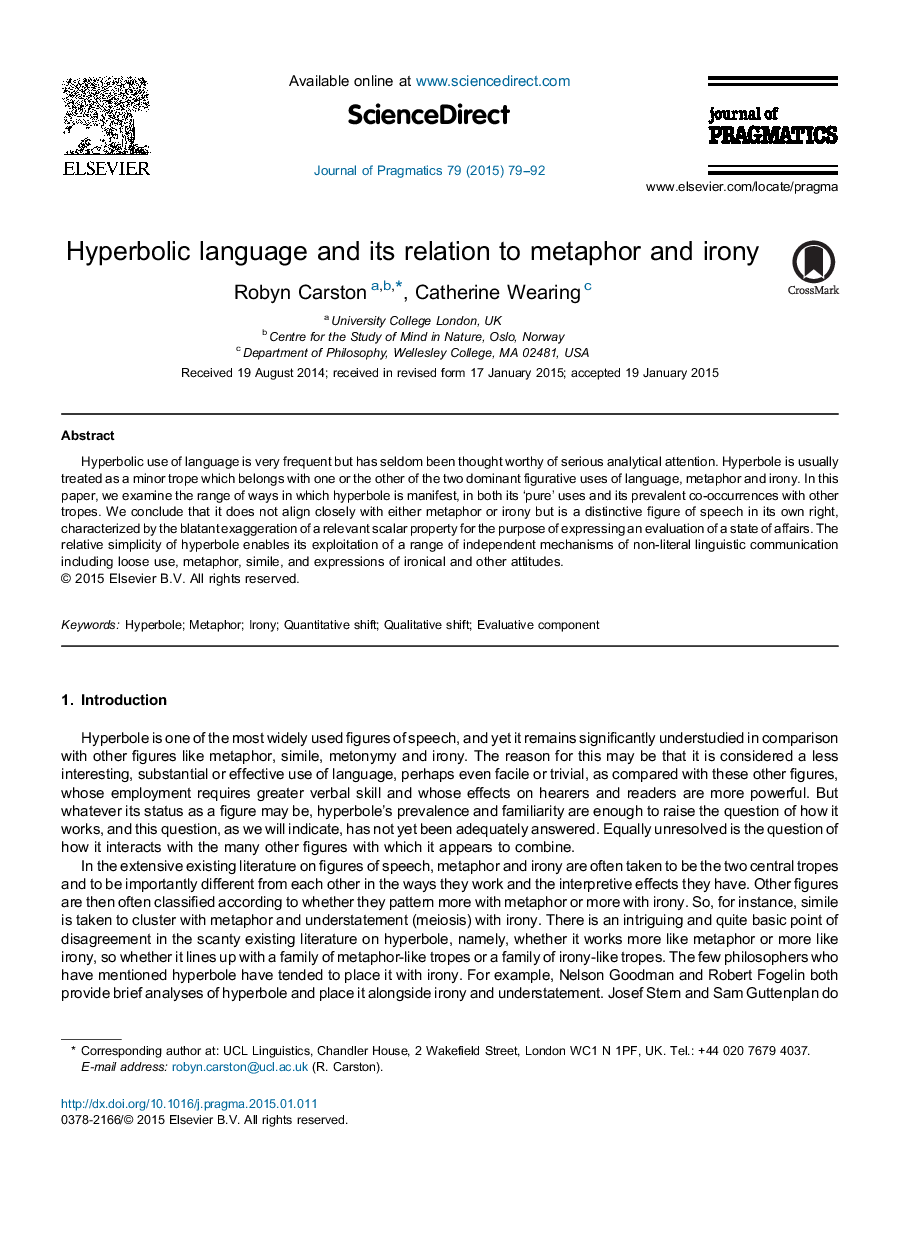| Article ID | Journal | Published Year | Pages | File Type |
|---|---|---|---|---|
| 932639 | Journal of Pragmatics | 2015 | 14 Pages |
•Hyperbole is shown to be a fundamentally different trope from irony.•Hyperbole shares some characteristics with metaphor but is essentially distinct.•Hyperbole involves a scalar meaning shift and an evaluative component.•Hyperbole co-occurs with other tropes more frequently than any other trope does.•Hyperbole exploits a wide range of mechanisms of non-literal communication.
Hyperbolic use of language is very frequent but has seldom been thought worthy of serious analytical attention. Hyperbole is usually treated as a minor trope which belongs with one or the other of the two dominant figurative uses of language, metaphor and irony. In this paper, we examine the range of ways in which hyperbole is manifest, in both its ‘pure’ uses and its prevalent co-occurrences with other tropes. We conclude that it does not align closely with either metaphor or irony but is a distinctive figure of speech in its own right, characterized by the blatant exaggeration of a relevant scalar property for the purpose of expressing an evaluation of a state of affairs. The relative simplicity of hyperbole enables its exploitation of a range of independent mechanisms of non-literal linguistic communication including loose use, metaphor, simile, and expressions of ironical and other attitudes.
